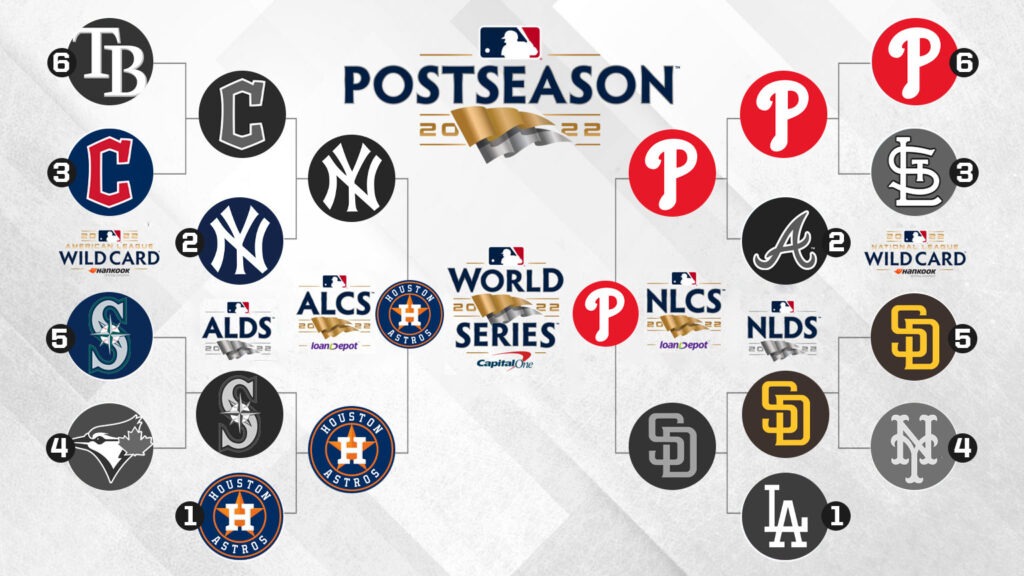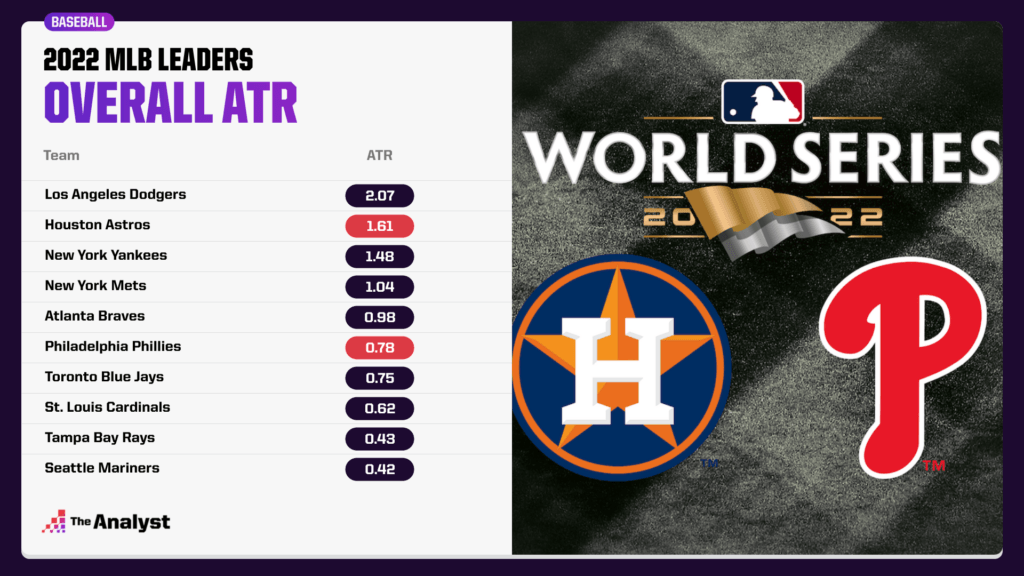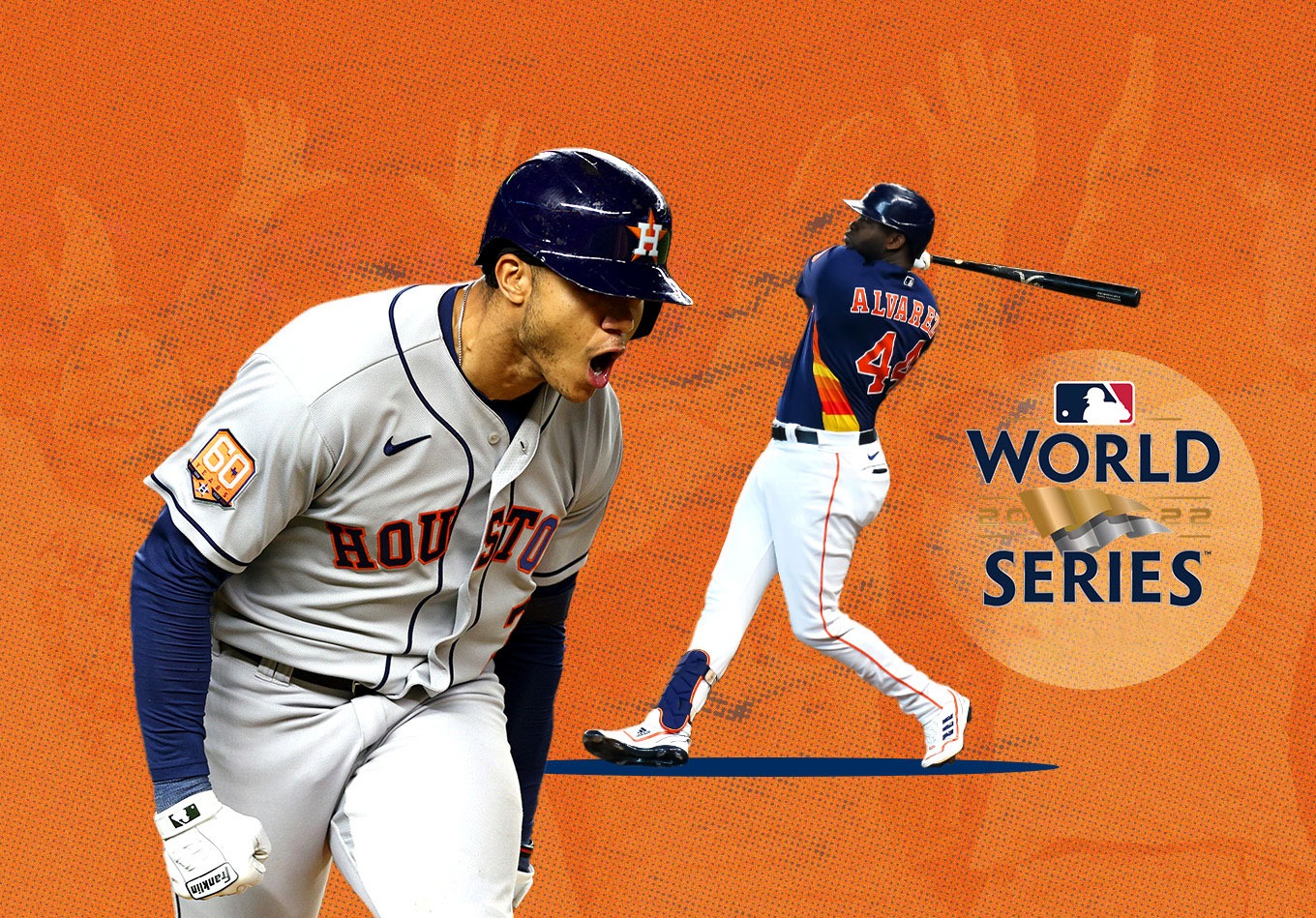The Houston Astros are MLB’s modern dynasty.
No, they haven’t won the World Series since 2017, but they have been the most successful team in the league since the second half of the 2010s.
The Astros may have the second-best winning percentage (.576) in baseball since 2014 behind the Los Angeles Dodgers (.618), but they’ve made the World Series four times in the last six years, and they fell in the American League Championship Series in the remaining two seasons. The Dodgers have reached the Fall Classic three times in the past six years and have fallen in the National League Division Series in two of those seasons.
Yes, it’s difficult to accept for Houston haters, but cheating scandal or not, the Astros are a well-oiled machine in which scouting, player development and coaching find harmony.
They’ve lost Gerrit Cole, Charlie Morton, George Springer, Carlos Correa and other stars in recent seasons, but have traded for and/or developed Yordan Álvarez, Framber Valdez, Cristian Javier, Kyle Tucke, Jeremy Peña and others.
The Astros always make sure to keep on producing reliable contributors, and that’s the mark of a top MLB organization.
Here we are, with Houston having won 106 regular-season games and undefeated in the playoffs so far. Can the Philadelphia Phillies defeat them?
Of course they can. It’s a best-of-seven series, leaving all kinds of room for unexpected fortune turns and randomness, not to mention Philly has a very good roster in its own right. But the fact remains that Houston is the heavy favorite as the No. 1 seed in the AL versus the sixth seed in the NL.

One of the reasons the Astros have the edge is the depth and length in their lineup and their very good defense. Having the tough task of being Correa’s replacement, Peña has made sure to contribute both offensively and defensively in 2022.
With a .764 OPS and 13 home runs in the first half, not to mention some elite defensive play, Peña was fighting to win the AL Rookie of the Year Award. Unfortunately, a rough second half ensued (.664 OPS) and Julio Rodriguez and Adley Rutschman took off, taking Peña out of the race. His .253/.289/.426 line, 22 home runs, 11 steals and .715 OPS were solid marks for a first-year player, though, if we also consider his solid fielding.
Fortunately for the Astros, he caught fire again in the playoffs. His .303/.324/.667 line, three dingers and .991 OPS make him the most productive Astro in October besides Álvarez, and he was particularly good in the ALCS against the New York Yankees: .353/.353/.824 with two doubles, two homers and a 1.177 OPS in four games. Wow.
Peña is still a work in progress, but if there is an organization capable of getting the best out of him once his development is finished, it’s the Astros.
By raw value, or RV, we can analyze performance on a per-pitch basis rather than just looking at the outcome of the at-bat. Raw value takes a deep look at elements such as plate discipline, quality and quantity of contact, exit velocity, launch angle, and other things.
We have total RV, but RV+ examines hitters relative to the league average using 100 as the league average value. For batters, a higher RV+ means better performance.
Peña rated as league average as a hitter with a 100 RV+ during the regular season, but he’s boosted that mark to 106 since the postseason began. Let’s take a deeper look at who he is as an offensive player by evaluating his performance using three metrics: contact+ assesses how good he is at making contact considering factors similar as those of RV+; discipline+ takes a peek at his ability to discern balls from strikes; and BIP+ examines how much damage he inflicts when he does make contact. Again, 100 is considered average and higher is better.
Peña makes contact right around the league-average rate (99 contact+) and does damage at an above-average rate when he hits the ball. After posting a 118 BIP+ during the regular season, he’s increased that mark to 126 heading into the World Series. However, his plate discipline ranks well below average with an 88 discipline+ entering this series.
Because of his decent contact and BIP numbers, Peña is in line to really take his offensive performance to another level if he can improve his free-swinging ways and do a better job at working the count, stop chasing and taking advantage of hitter’s pitches.
His power, speed, and incredible potential defensively will keep him in the lineup even if he struggles. He ended the regular season with the third-most errors and ranked 10th in fielding percentage among AL shortstops, but he was sixth with a 3.66 range factor per game (the average number of plays a fielder makes in a game) and fourth with a .823 zone rating (an estimate of a player’s efficiency in fielding balls hit into his typical defensive zone).
Overall, you could say Peña is already helping the Astros, and the future can be even brighter for him if he improves his plate skills.
We’ve taken a deep look at the Astros’ budding infield star. Now, it’s time to see how the team rates as a whole.
Our adjusted team ratings (ATR) will allow us to compare the Astros performance to that of the league average team. ATR normalize a team’s performance (for any sport) from league environmental factors that can either inflate or deflate its numbers.
In the specific case of baseball, they measure how many runs per nine innings better or worse teams are compared to the average club for a given year. The great thing about ATR is that they include playoff performance.
Let’s see what the Astros have to counter the Phillies:
Offense: Houston ranks eighth in MLB in our team ratings with 0.39 runs per nine innings better than the average team, but that number doesn’t do justice to the overall star power and depth of its lineup.
Álvarez (192 RV+ heading into the World Series) is a top-five hitter in baseball, while Kyle Tucker (135 RV+), Alex Bregman (150 RV+), Chas McCormick, Yuli Gurriel and Peña are also dangerous. You can add José Altuve to that list if he can build on a 2-for-4 performance in Game 4 against the Yankees that followed a 1-for-28 slump.
This lineup will be a handful for the Phillies’ pitching staff, which has some seriously talented guys like Zack Wheeler, Aaron Nola and Seranthony Domínguez, but may lack the necessary depth.
Pitching/Defense: Our ATR defensive ratings evaluate runs against, so they account for both pitching and fielding. Houston excels at both, ranking second in baseball at minus -1.22 (lower is better for defensive ratings).
The rotation has Justin Verlander (70 RV-), Framber Valdez (83 RV-), Lance McCullers Jr. (82 RV-), Luis Garcia, Cristian Javier (57 RV-), José Urquidy and Hunter Brown, while the bullpen has excellent relievers such as Ryan Pressly, Rafael Montero, Bryan Abreu, Ryne Stanek and more.
It’s a deep and talented group ready to dominate even the best hitters.

Overall: The Phillies may be built for the playoffs, but that doesn’t make them better than the Astros – at least on paper. Houston has both star power and depth, plus a great manager, excellent defense and an immense appetite for winning.
The numbers – they have been the second-best team in MLB in our ATR – validate their success, but the eye test does, too.
There may not be a team better built for a long postseason run than the Astros, but they have to prove it on the field against a Phillies team that has already shown it’s capable of pulling off the improbable.
Data modeling by Stats Perform’s Matt Scott.
